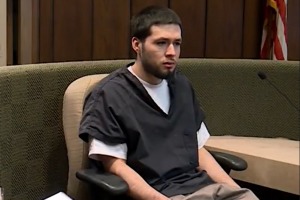Postmodernism Myth Fueled Rob Bell vs. Piper Debates, Says Author
We are not in postmodern times, one author emphasizes, saying the sooner we realize that, the better.
Hoping to debunk what he calls the myth of modernist Christians vs. postmodern Christians, author and speaker Mark Sayers posted an article on his website explaining why he believed there was no such thing as a postmodern Christian – because to him, postmodernism was never an epoch.
“For the last ten to fifteen years a great fallacy has clouded debate around the future of the Church in the West. The fallacy goes something like this. At some stage...the postmodern era began. All of a sudden everything changed and a line was drawn in history. On one side were the postmodernists and on the other the modernists.”
“The modernists were enslaved to a highly cerebral, hegemonic view of the world,” Sayers wrote. He said they were obsessed with progress and holding the world at a cold calculated distance. “They were beholden to technology, and if they were religious were either dogmatic fundamentalists or materialist liberals. They hated anything non-Western or from the past...”
The postmodernists on the other hand, he described, were everything that the modernists were not. They loved spirituality instead of religion, embraced the non-West, the past, and anything experiential. They had piercings and hated objective truth.
“So the call was clarion, the future was postmodern and we had no choice but to enter into its cleansing baptismal waters which would rid us of any traces of sinful modernism, expunge our enlightenment values, and heal us of the illness of being from the West.
“Once transformed and having shed our modernist selves we now could begin the task of shaping a postmodern faith, postmodern churches, and most importantly a postmodern theology.”
If modernist churches were into objective truth, long dogmatic sermons, biblical proof texting, management structures, order and the mechanical, Sayers penned, postmodernists were into poetry, organic structures, chaos, doubt and mystery.
Many postmodernists thought a new era was birthed, speculating that the movement would soon take over modernism. But when the change never actuated, a Christian culture war ensued.
“It is [this] mythology that fuels the current [Rob] Bell vs. [John] Piper, emergent vs. new reformed cyber melees.” Largely speaking, while Piper emphasizes on doctrinal accuracy, Bell is against “rigid” doctrinal pronouncements.
So where did everything go wrong?
The problem began when people started to view postmodernism as an epoch, the senior leader of Red Church in Melbourne, Australia, surmised. That’s when “things got messy.”
Though he recognized that postmodernism was an actual philosophical movement – started by French intellectuals who were frustrated at the failed attempts at social revolution during the student riots of 1968 – Sayers stated that it was a movement “stretched beyond its limits.”
“The label was attached to everything...A whole host of confusions emerge when we examine some of the cultural trends of our day that have been described as postmodern.”
Identifying many of the “postmodern trends” with other past periods and movements, the author found that many of the traits used to describe the “so-called postmodern era could be found in a whole range of movements and individuals who [had] lived or existed over the last few centuries from the Pre-Raphaelites, to the arts and crafts movement, to the Dadaists, to the surrealists, the impressionists, to Nietzsche, to Picasso, to Joyce, to Kierkegaard, to Burroughs and so on.”
Appreciating the past was linked to Neo-Classicism and the Gothic Revival; spirituality, to the nineteenth century’s appetite for the occult; and the embrace of nature, the mysterious, experience, the poetic, the past, the sublime, the exotic, were all linked to Romanticism.
Offering a “much better way of understanding...the current culture wars within contemporary Christianity and the broader contemporary culture,” Sayers expressed that rather than a struggle between postmodernists and modernists, it was a struggle between a modernism A and a modernism B.
“Modernity is better understood not as a clearly defined monolithic structure, but rather as an ongoing conversation. There are claims and counter claims within modernity. A case will be struck for progress, a counter claim will be raised and the conversation will continue.”
Because of this, the author stated that building a church or a faith for postmodern times was always going to be problematic as no one could ever really agree on what the term actually meant.
“Both sides of the current culture wars express different shades of modernity,” Sayers concluded. “Realizing this reality forces us to get off our cultural high horses...[and] really get on with the task of being the people of God in the West.”
Sayers has written several books including The Vertical Self and The Trouble with Paris.
Sayers is also the creative director of Uber Ministries, a cultural specialist organization that interprets social trends and articulates a fresh way of living the Gospel in the 21st century.




























